Understanding Bone Growth: Mechanisms and Implications
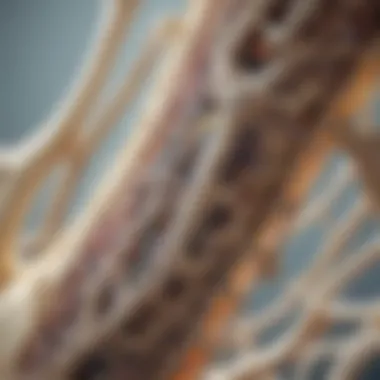
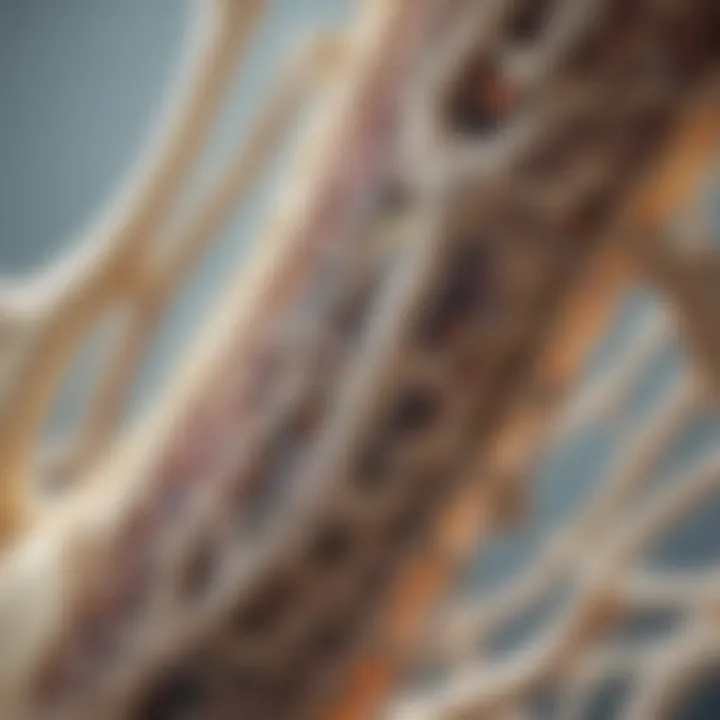
Intro
Bone growth is a fundamental physiological process that not only shapes our bodies but also has significant implications for overall health. A deep understanding of the mechanisms and factors influencing bone growth is essential for students, researchers, educators, and professionals alike. This article aims to unravel the complexities of bone growth, focusing on the intricate interplay of genetics, nutrition, and hormonal regulation. Additionally, it addresses the consequences of impaired bone growth for health, especially in younger populations.
In this narrative, key insights from contemporary research will be discussed, shedding light on how various components work together to maintain skeletal health. By examining these factors, readers will appreciate the significance of bone growth in the context of human development and health management.
Research Highlights
Overview of Key Findings
Recent studies have illuminated several critical aspects of bone growth. It is not merely a mechanical process but a highly regulated physiological phenomenon influenced by multiple factors. For instance, genetic predispositions play a pivotal role. Specific genes have been identified that affect bone density and growth patterns. Nutrition also serves as a vital component. Deficiencies in essential vitamins and minerals can lead to suboptimal bone health.
Hormonal regulation is another key player in this process. Hormones such as parathyroid hormone, calcitonin, and sex hormones significantly impact bone remodeling and growth. Understanding these influences allows for better interventions in cases of impaired bone growth.
Significance of the Research
Understanding bone growth mechanisms is more than an academic exercise. The implications extend to clinical applications. Impaired bone growth can lead to conditions such as osteoporosis, which disproportionately affects older adults. By investigating the underlying processes that govern bone growth, researchers can develop therapeutic strategies to prevent or treat these conditions. Thus, continuing research in this area is essential not only for enhancing skeletal health but also for addressing broader public health challenges.
"With an aging population, understanding how to maintain bone density through every life stage is crucial for health care providers and patients alike."
Original Research Articles
Summary of the Article
Each research article contributes uniquely to our understanding of bone growth. They explore various dimensions, from genetic influences to the roles played by dietary elements. These articles provide empirical data that highlight significant relationships between bone health and lifestyle factors, reinforcing the need for a holistic approach to bone health.
Author Contributions
Authors of these studies include experts across multiple fields, such as genetics, endocrinology, and nutrition. Their collective efforts bring forward a wealth of knowledge that enhances our comprehension of the multitude of factors involved in bone development. Each author’s contribution is vital for painting a complete picture of bone growth mechanisms.
In summary, the depth of knowledge gained from studying bone growth mechanisms, along with understanding the influences of genetics, nutrition, and hormones, is essential for fostering better health outcomes across populations. This discourse not only enrichens academic understanding but also provides critical insights for clinical applications.
Preamble to Bone Growth
Understanding bone growth is crucial for recognizing how our body develops and maintains its structure. The process of bone growth encompasses several physiological mechanisms that are sensitive to various influencing factors. These elements include genetics, nutrition, hormones, and physical activity, all of which play a significant role in determining bone health and overall well-being.
Bone tissue is not static; it undergoes continuous remodeling throughout a person's life. This dynamism is important because it ensures bones remain strong and can adapt to the mechanical demands placed upon them. Investigating how these processes occur can help elucidate why some individuals may face issues with bone density and growth.
A comprehensive analysis of bone growth also reveals implications beyond mere physical structure. Healthy bones contribute to mobility, posture, and the prevention of fractures. By exploring the intricate mechanisms behind bone development, we can gain insights into treating conditions like osteoporosis or other disorders affecting skeletal integrity.
Definition and Importance
Bone growth refers to the biological process by which the skeletal system increases in size and strength. This is critical not only for physical development during childhood and adolescence but also for maintaining bone density in adulthood. Bone growth involves the formation of new bone tissue by cells called osteoblasts, while osteoclasts are responsible for the resorption of old bone tissue. The balance between these two processes is crucial for maintaining healthy bone structure.
The significance of bone growth extends beyond just its definition. Healthy bone development is imperative for preventing skeletal deformities and enhancing physical performance. Conditions like osteopenia and osteoporosis stem from inadequate bone growth, stressing the need for an understanding of the biological mechanisms involved.
Overview of Bone Structure
To fully appreciate bone growth, it is essential to understand bone structure. The human skeleton is composed of various types of bone. Each type serves unique functional purposes related to strength, weight, and support.
Bone tissue is primarily made up of:
- Cortical Bone: This dense, outer layer provides strength and support.
- Trabecular Bone: This spongy type located inside bones helps absorb stress and distribute weight.
Moreover, the bone matrix contains collagen fibers and mineral components, primarily hydroxyapatite, which provide tensile strength and rigidity. Understanding these structures aids in comprehending how bone growth occurs and how factors like diet, genetics, and exercise might influence it.
Conclusively, a deeper exploration into the mechanisms of bone growth is not only relevant for those in health sciences but for anyone interested in understanding how our bodies build themselves. This section serves as a foundation for analyzing the subsequent themes outlined in this article.
Patterns of Bone Growth
Understanding the patterns of bone growth is critical for comprehending how the skeleton develops and maintains its structure throughout life. Bone growth is not a simple process; it involves various patterns and phases that ensure bones can support the body adequately. These growth patterns provide insights into how bones adapt to mechanical stress and respond to physiological needs. Moreover, recognizing these patterns helps in diagnosing and managing conditions affecting bone health.
Longitudinal Growth
Longitudinal growth refers to the increase in bone length, which primarily occurs at the epiphyseal plates, located at the ends of long bones. This process is crucial during childhood and adolescence as it determines overall height. The epiphyseal plates consist of cartilage that expands and ossifies over time. During this growth phase, chondrocytes, a type of cell in cartilage, proliferate and mature, allowing the bone to elongate.


Factors such as nutrition, hormonal levels, and overall health play significant roles in modulating longitudinal growth. Growth hormone and sex hormones influence this process extensively. When these hormones are imbalanced, it can result in stunted growth or excessive growth conditions such as gigantism. Monitoring development patterns during early life is essential to identifying anomalies early.
Appositional Growth
Appositional growth is the process by which bones increase in width. This growth occurs through the addition of new bone tissue on the outer surface, allowing skeleton to withstand greater forces as it matures. Osteoblasts are the primary cells responsible for this type of growth as they produce new bone matrix. At the same time, osteoclasts resorb bone from the inner surface to maintain balance, ensuring that overall strength is not compromised.
This growth pattern is particularly vital when considering weight-bearing activities. Increased mechanical stress from exercises, such as weightlifting, triggers an adaptive response, resulting in increased bone density and strength. Therefore, incorporating weight-bearing activities into daily routines can significantly enhance bone health in individuals of all ages.
Phases of Bone Development
Bone development occurs in several phases, which are essential for proper skeletal formation. These phases include:
- Intramembranous ossification: This phase involves the direct formation of bone from mesenchymal tissue, typically seen in flat bones like the skull.
- Endochondral ossification: In this process, cartilage serves as a template for bone development. It is predominant in long bones.
- Bone remodeling: This ongoing process allows bones to adapt to stress and repair micro-damage over time. It involves a balance between osteoblast and osteoclast activity.
The coordination of these phases is vital for overall bone health. Disruptions in any phase might lead to skeletal abnormalities or diseases. For instance, inadequate remodeling can lead to conditions such as osteoporosis, which presents a significant risk for fractures.
Overall, the patterns of bone growth underline the complexity of skeletal development and emphasize the importance of maintaining healthy lifestyles and supportive environments for optimal bone formation and maintenance. Understanding these biological phenomena equips researchers, educators, and health professionals with the insights necessary for fostering bone health across populations.
Cellular Mechanisms of Bone Growth
Understanding the cellular mechanisms of bone growth is critical for several reasons. These processes bridge the gap between bone formation and resorption. They define how bones adapt to various stresses and how they maintain structural integrity throughout life. The intricate workings of these mechanisms explain why certain treatments or interventions are effective in promoting bone health. Attention to the cellular level offers insight into conditions like osteoporosis and provides pathways for new therapeutic strategies.
Osteoblasts and Osteoclasts
Osteoblasts and osteoclasts play opposing roles in bone metabolism. Osteoblasts are responsible for bone formation. They produce the bone matrix and facilitate the mineralization process. These cells synthesize collagen and other proteins to form a scaffold that supports new bone tissue. On the other side, osteoclasts are crucial for bone resorption. They break down bone tissue, releasing minerals back into the bloodstream.
This balance between the activity of osteoblasts and osteoclasts is essential for maintaining healthy bone density. Disruption in this balance can contribute to disorders such as osteoporosis, where bone resorption exceeds formation. Understanding how these two cell types interact can help in the development of treatments targeting their functions. For instance, therapies that enhance osteoblast activity may significantly improve bone density in individuals at risk of fracture.
Role of Mesenchymal Stem Cells
Mesenchymal stem cells (MSCs) are pivotal in bone growth. They have the ability to differentiate into osteoblasts, chondrocytes, and adipocytes, contributing to the bone remodeling process. MSCs are located in the bone marrow and are attracted to areas of bone injury or stress. They can increase bone formation when stimulated correctly.
In research, MSCs are being explored for their regenerative capabilities. Experiments show that certain growth factors can boost their potential. For instance, bone morphogenetic proteins (BMPs) can promote MSC differentiation into osteoblasts. Moreover, the overall health of the bone marrow environment influences MSC function. Strategies aimed at enhancing the function of MSCs could lead to significant advancements in treating bone disorders or injuries, paving the way for promising therapies.
Bone Matrix and Mineralization
The bone matrix is the structural framework of bones, composed mostly of collagen. This matrix is vital for mineralization, which primarily involves the deposition of hydroxyapatite crystals. The process of mineralization is essential for the mechanical strength of bones. Mineralization occurs in two phases: an initial phase where collagen is produced, followed by a phase where minerals are deposited, resulting in hardening of the bone.
This process is regulated by several factors, including osteocalcin, which binds calcium ions. Other proteins in the matrix, such as osteopontin, play a role in the mineralization process. Disruptions in matrix composition or mineralization can result in weak bones and increase fracture risk. Understanding the nuances of how the bone matrix is formed and mineralized can lead to innovative strategies for reinforcing bone health.
Key Factors Influencing Bone Growth
Bone growth is a complex process influenced by various factors. Understanding these factors is essential for grasping how bone health is maintained and how growth can be affected in different life stages. Among the most significant contributors are genetic influences, nutritional requirements, and hormonal regulation. Each of these elements plays a vital role in shaping the skeletal structure.
Genetic Influences
Genetics profoundly influences bone growth. Specific genes are responsible for regulating the development, size, and density of bones. Variations in these genes can lead to different bone structures among individuals. For instance, polymorphisms in the vitamin D receptor gene have been linked to the onset of osteoporosis, indicating that genetic factors can predispose individuals to certain bone conditions.
Genetic influences also dictate how bones respond to external factors such as exercise and nutrition. Some individuals may possess a genetic predisposition that enhances bone density, making them less susceptible to fractures. Additionally, genetic factors can interplay with environmental factors, creating a complex web of influences that ultimately determine bone health.
Nutritional Requirements
Nutrition is a critical aspect for effective bone growth. Essential nutrients like calcium, phosphorus, and vitamin D are particularly important. Calcium plays a direct role in building and maintaining bone mass. A deficit in calcium intake can lead to decreased bone density, making bones fragile.
Similarly, phosphorus is vital for bone mineralization. It works with calcium to form the mineral matrix that provides structural integrity to bones. Vitamin D's role is to enhance the absorption of calcium in the gut. Without adequate vitamin D, bone health suffers, leading to conditions like rickets in children and osteomalacia in adults.
Incorporating a balanced diet rich in these nutrients can significantly improve bone health. Foods such as dairy products, leafy greens, and fish are excellent sources. It is necessary to consider individual dietary needs, especially during critical growth periods like childhood and adolescence.
Hormonal Regulation
Hormones are key regulators of bone growth. They affect the activity of osteoblasts and osteoclasts, the cells responsible for bone formation and resorption. Estrogen and testosterone are particularly impactful during puberty when they stimulate bone growth. The increase in these hormones leads to a surge in bone mass.
On the other hand, hormones like parathyroid hormone and calcitonin work to maintain calcium balance in the body. When calcium levels drop, parathyroid hormone increases osteoclast activity to release calcium from bones, while calcitonin can lower blood calcium by inhibiting osteoclast activity. In this way, hormonal balance is crucial for maintaining healthy bone density.
It is evident that hormonal regulation affects both the development and ongoing health of bones. Age-related changes in hormone levels can lead to complications such as osteoporosis, highlighting the need for monitoring hormonal health as a part of bone care strategies.
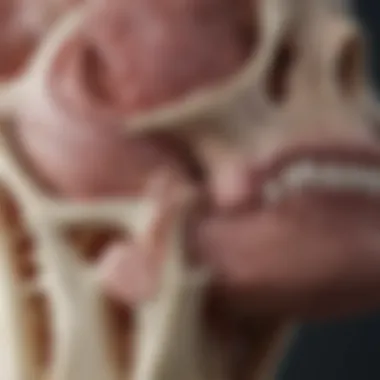
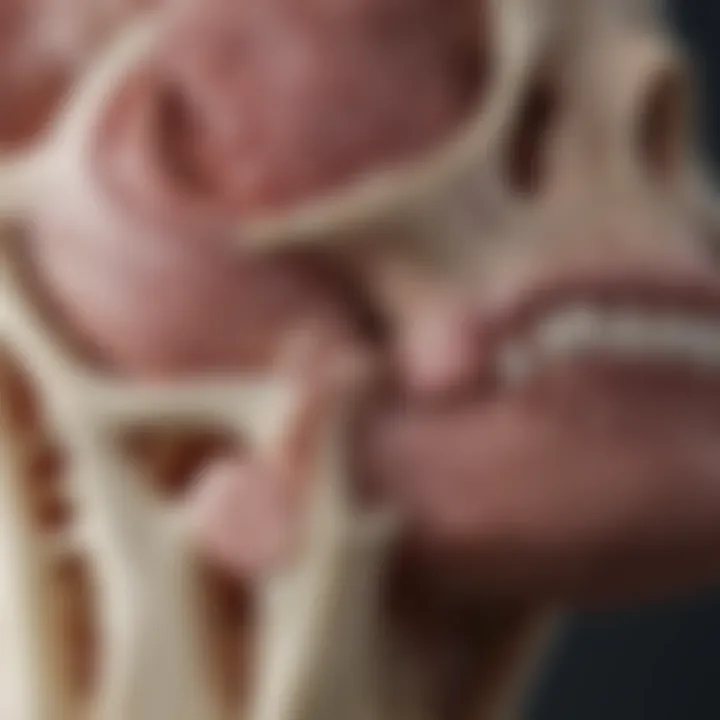
"Understanding the intricate relationship between the factors influencing bone growth can lead to better preventative measures and treatment strategies for bone-related disorders."
Overall, the interplay of genetic, nutritional, and hormonal factors is vital in determining bone growth and health throughout life. Each factor contributes uniquely, impacting one another to ensure proper bone development and maintenance. Recognizing these factors can guide individuals in making informed decisions about their bone health.
The Role of Exercise in Bone Growth
Exercise is a crucial component in the maintenance and development of bone health. It not only promotes the mechanical integrity of bone but also influences the biological processes that foster growth and remodeling. Understanding the role of exercise in bone growth provides valuable insights into how to enhance skeletal health across the lifespan. This section delves into the impact of mechanical stress on bone density and identifies specific types of exercise that contribute positively to bone strength.
Mechanical Stress and Bone Density
Mechanical stress is a fundamental stimulus for bone growth. When bones are subjected to stress—such as during weight-bearing activities—osteoblasts are activated to increase bone formation. This process is known as mechanotransduction. It involves the conversion of mechanical signals into biochemical responses, leading to the deposition of new bone matrix.
Research indicates that greater bone density correlates with increased mechanical loading. The more the bone is challenged, the stronger it becomes. Factors such as loading duration, frequency, and intensity play an essential role in this process. Inadequate mechanical stress may lead to a decrease in bone mass, as seen in conditions like osteoporosis.
"Bones adapt to the loads under which they are placed. If loading increases, bone will remodel itself over time to become stronger to resist that sort of loading."
Thus, engaging in regular activities that promote loading is vital for maintaining healthy bone density.
Types of Exercise Beneficial for Bone Health
Several types of exercises can effectively promote bone health. Understanding their unique contributions is important for optimizing bone growth and maintenance.
- Weight-bearing exercises: Activities such as running, walking, and dancing apply forces to the skeleton and can stimulate bone formation. Weight-bearing activities are considered highly effective in enhancing bone density.
- Resistance training: Lifting weights creates a demand on the bones and muscles, leading to an increase in bone strength. This type of exercise particularly benefits those at risk of bone density loss.
- High-impact activities: Sports that involve jumping, such as basketball or gymnastics, are beneficial due to their ability to create substantial impact forces on bones, thus promoting growth.
- Balance and coordination exercises: Activities like yoga and tai chi may not directly increase bone density, but they improve balance and reduce falls, which is especially important for older adults at risk of fractures.
Incorporating a mix of these exercises into a regular fitness routine can maximize bone health benefits. It is crucial to consult with healthcare or fitness professionals when designing a regimen, especially for individuals with pre-existing conditions or older adults.
By understanding the integral role that exercise plays in bone growth, individuals can take informed steps towards ensuring their skeletal health and preventing the effects of osteoporosis and other related disorders.
Pathological Conditions Affecting Bone Growth
Understanding pathological conditions that affect bone growth is essential for comprehending the overall health and stability of the skeletal system. These conditions can lead to significant complications, impacting both quality of life and functional capacity. It is crucial to explore how these disorders disrupt normal bone growth processes. They highlight not only the complexity of skeletal development but also underscore the need for accurate diagnosis and targeted intervention strategies to mitigate long-term effects.
Disorders of Bone Growth
Various disorders impede proper bone development and growth. These can stem from genetic anomalies, nutritional deficiencies, or hormonal imbalances. Some notable disorders include:
- Achondroplasia: A common form of dwarfism that results from a genetic mutation in fibroblast growth factor receptor 3 (FGFR3), affecting the growth of long bones.
- Osteogenesis Imperfecta: Known as brittle bone disease, this condition results from defects in type I collagen and leads to fragile bones with a high likelihood of fractures.
- Rickets: Caused by vitamin D deficiency in children, rickets leads to soft and weak bones, often presenting with deformities such as bowing of the legs.
"Recognizing the presence of bone growth disorders is vital in initiating timely interventions that could prevent further complications."
These conditions reveal the intricate balance required for healthy bone development. Identifying specific disorders allows for guided research in genetics and treatment options.
Osteoporosis and Fragile Bones
Osteoporosis is a widespread condition characterized by a gradual reduction in bone density, leading to fragile bones. This deterioration increases the risk of fractures even in low-impact situations. Numerous factors contribute to the onset of osteoporosis, including:
- Advanced age
- Chronic hormonal changes, particularly in postmenopausal women
- Sedentary lifestyle and lack of physical activity
Bone remodeling is an ongoing process where old bone is replaced with new bone tissue. In osteoporosis, this balance is disrupted. The rate of bone resorption by osteoclasts outpaces the formation of new bone by osteoblasts, resulting in a net loss of bone mass. Effective strategies for combating osteoporosis often include:
- Ensuring adequate intake of calcium and vitamin D
- Engaging in weight-bearing exercises
- Medical interventions such as bisphosphonates to slow bone loss
Educational efforts about osteoporosis are crucial for prevention and early intervention.
Impact of Aging on Bone Growth
Aging significantly affects bone growth and maintenance. As people grow older, various physiological changes affect the skeletal system. Bone density typically peaks in early adulthood and gradually declines thereafter. This decline is accelerated in women post-menopause due to the drop in estrogen levels. Factors contributing to the impact of aging on bone health include:
- Decreased hormonal production
- Slowed bone remodeling processes
- Increased fragility and risk of fractures
It is important to approach bone health in an interdisciplinary manner, focusing on nutrition, exercise, and preventive care. Understanding these age-related changes can help in developing strategies to maintain bone health into older age.
Research Advances in Bone Growth
Research in bone growth is crucial for understanding how our skeletal system develops and responds to various stimuli. The advancements in this field hold significant implications for treating different bone-related diseases and improving overall bone health. Recent progress opens doors to innovative treatment options, which can enhance healing processes and ultimately improve patient outcomes. Furthermore, this area of research enables us to uncover biological principles that can be applied in clinical settings, promoting a deeper understanding of skeletal health and disease.
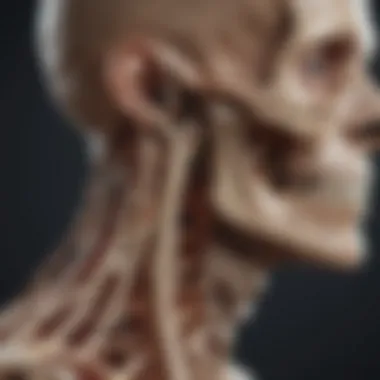
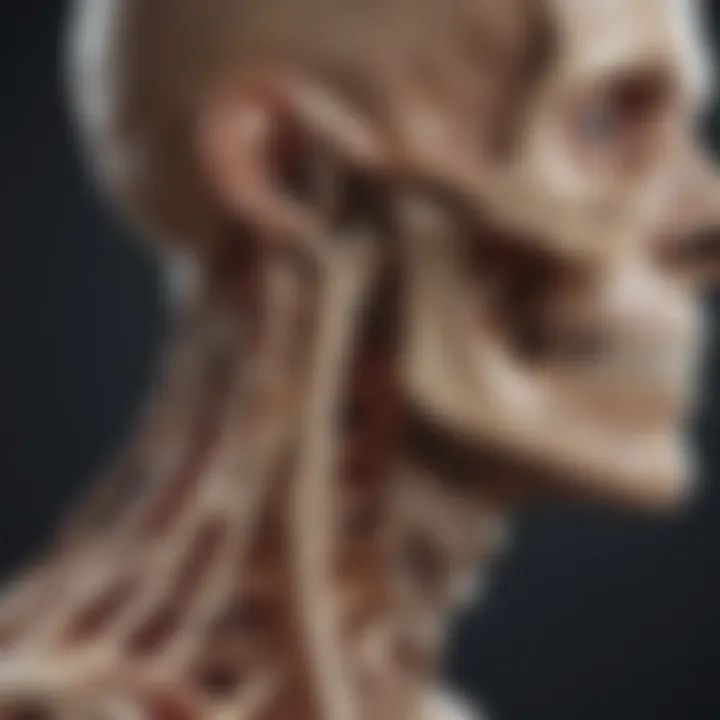
Innovations in Treatment Approaches
Modern treatment approaches for bone growth issues have evolved remarkably due to scientific advances. Techniques that once seemed distant now demonstrate potential for real-world applications. Some notable innovations include:
- Biomaterials: Advanced biomaterials, such as calcium phosphates and bioactive glasses, are being used to promote bone growth. These materials mimic the natural bone matrix, providing a scaffold for osteoblasts to regenerate bone tissue effectively.
- Gene Therapy: Gene therapy techniques are being researched to target specific genes involved in bone density and growth. By delivering therapeutic genes to bone tissue, researchers aim to enhance bone formation and heal fractures more rapidly.
- Stem Cell Therapies: Utilizing mesenchymal stem cells for fracture repair and regeneration is gaining traction. These cells can differentiate into osteoblasts and promote effective bone healing in various conditions.
The effectiveness of these innovations promises to shift paradigms in how we treat bone growth disorders, paving the way for more tailored and effective therapies.
Recent Discoveries in Bone Biology
Research in bone biology has yielded numerous discoveries that impact our understanding of bone growth and health. Some of the key findings include:
- Mechanobiology: Understanding how mechanical forces influence bone growth has led to insights into optimizing exercise regimens for maintaining and increasing bone density. Regular stress on bones from weight-bearing exercises promotes bone remodeling and growth.
- Cell Signaling Pathways: Discoveries related to signaling pathways, such as Wnt and RANK-RANKL, have elucidated how cells communicate during bone remodeling. This knowledge is essential for developing drugs that can target these pathways to treat conditions like osteoporosis.
- Microbiome Influence: Recent studies suggest the gut microbiome may play a role in bone health. A healthy gut microbiome can be associated with better bone density and overall skeletal health, indicating the importance of nutritional factors in maintaining strong bones.
"Understanding bone biology might be the key to unlocking new therapies for bone health issues."
To sum up, advances in research about bone growth not only enhance our knowledge of physiological processes but also lead to innovations that can change treatment approaches. These developments bridge the gap between science and practical solutions in enhancing bone health, ultimately benefiting individuals at risk of bone disorders.
Future Directions in Bone Growth Research
Understanding the future directions in bone growth research is pivotal for advancing medical and scientific knowledge in this vital area. This section outlines how innovations and interdisciplinary strategies could improve bone health outcomes and illustrates the potential benefits of these advancements.
Emerging Technologies in Osteology
Recent advancements in technology have markedly impacted the field of osteology. Emerging technologies offer new pathways for observing and treating bone growth issues.
One notable technology is 3D imaging, which facilitates detailed analysis of bone structure. This technology allows researchers to visualize changes in bone density and architecture that may not be evident through traditional methods. Notably, technologies like MRI and CT scans contribute hugely to understanding bone development and disorders.
Additionally, bioprinting is becoming relevant. This process allows for the creation of bone-like structures using a patient's cells. This means that tissue engineering could provide more effective treatments for bone defects or injuries in the future. Nanotechnology is a further exciting avenue, helping researchers develop new materials that can enhance bone repair and growth.
The integration of artificial intelligence in analyzing data related to bone growth is another significant development. Machine learning algorithms can identify patterns and predict outcomes based on large datasets. Their predictive capabilities can lead to personalized treatment plans, improving the overall management of bone health.
"Emerging technologies such as bioprinting and AI are reshaping how we understand and treat bone growth."
Interdisciplinary Approaches to Bone Health
Interdisciplinary collaboration is becoming increasingly important in the research of bone health. Combining insights from various scientific fields offers a robust understanding of complex biological processes involved in bone growth.
Collaboration between biologists, engineers, and medical researchers can lead to innovative solutions. For instance, engineers can design advanced biomaterials for prosthetics, while biologists study their interactions with human tissues. Such partnerships can enhance the development of effective treatments for conditions like osteoporosis and fractures.
Integrating knowledge from nutritionists is also crucial. Nutrition has a direct impact on bone density and health. By working together, medical professionals and nutritionists can create comprehensive health plans that promote optimal bone growth.
Finally, involving psychologists in the conversation is beneficial. Mental health can influence physical health, including bone growth. A holistic approach that includes mental well-being will likely result in improved health outcomes.
As these interdisciplinary methods evolve, they can illuminate areas previously unexplored and lead to breakthroughs in treatment options and preventive strategies.
Culmination and Implications for Health
Understanding bone growth is crucial in multiple domains, including health, medicine, and biology. The processes that govern how bones grow and develop are not just of academic interest; they have real-world implications for health management and disease prevention. This article synthesizes the critical mechanisms behind bone development, outlines influential factors, and emphasizes how these aspects relate to overall health outcomes.
A key point is that bone health is not static but dynamically influenced by various internal and external factors. Genetic predispositions set the stage for growth potential, while nutritional habits, exercise, and hormonal balances shape the actual outcomes. Recognizing the interconnectedness of these elements encourages a comprehensive approach to maintaining and improving bone health.
"Bone health is a lifelong commitment. Understanding its mechanisms can guide both prevention and treatment strategies."
Moreover, impaired bone growth can lead to serious health conditions such as osteoporosis, fractures, and other musculoskeletal disorders. As such, understanding these implications is vital. Addressing bone health not only enhances quality of life, but also reduces healthcare costs associated with treating bone-related diseases. This holistic view stresses the importance of preventive care and early intervention.
Compounding this is the rapid advancement in research. Innovations in treatment and a deeper understanding of osteology provide new tools for managing bone health. Researchers are exploring gene therapies, novel medications, and lifestyle interventions tailored to individual needs. Staying updated with these findings is essential for healthcare professionals and patients alike.
In summary, the implications of bone growth research extend beyond the scientific community. They inform practices in nutrition, physical activity, and healthcare, shaping guidelines for maintaining bone health throughout life. As we move forward, fostering awareness and understanding of these implications will be key in promoting bone health in various populations.
Summary of Key Findings
- The mechanisms of bone growth involve a complex interaction of cells, hormones, and minerals.
- Growth patterns such as longitudinal and appositional growth are crucial for overall skeletal structure.
- Essential factors influencing bone growth include genetics, nutrition, and exercise.
- Pathological conditions like osteoporosis significantly impact bone density and health.
- Recent advancements in bone research facilitate better understanding and management of bone-related issues.
Importance of Bone Health in Overall Well-Being
Bone health plays a pivotal role in overall well-being. Healthy bones are essential for mobility, physical strength, and stability. They support the body's structure and protect vital organs. Furthermore, a solid skeletal framework is crucial in preventing injuries, especially in older adults.
Neglecting bone health can lead to significant consequences. Conditions like osteoporosis weaken bones, making them susceptible to fractures. These events often result in pain, reduced activity levels, and increased dependency on healthcare.
Maintaining good bone health contributes to a higher quality of life. Engaging in weight-bearing exercises, eating a balanced diet rich in calcium and vitamin D, and avoiding smoking or excessive alcohol are all proactive strategies.







